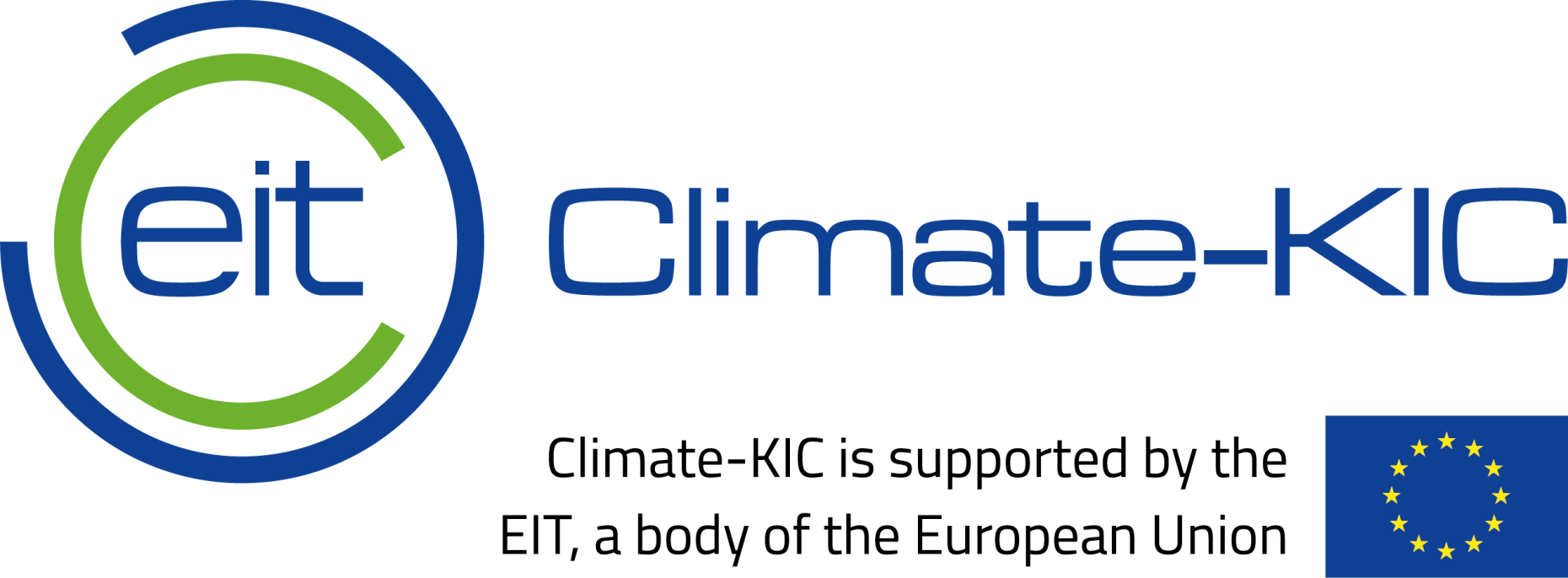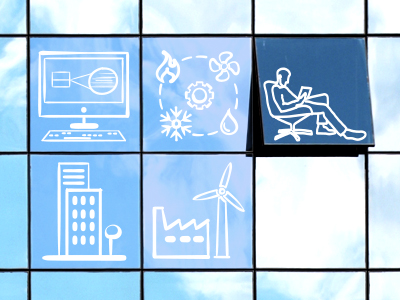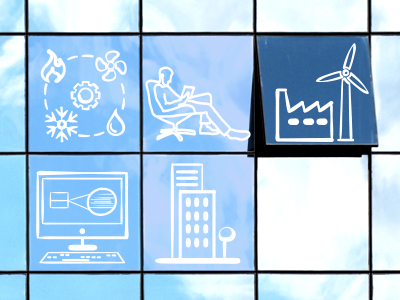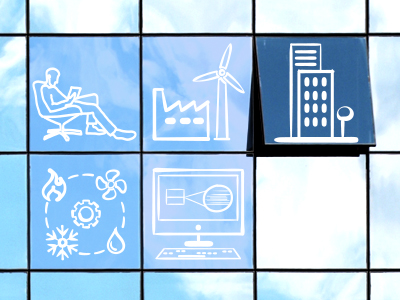Overview
Learn how to decide on efficient combinations of energy conversion systems and how to distribute and control air and energy flows in buildings whilst minimizing carbon emissions and optimizing thermal comfort in close consideration with the architect.
In this course you will start by identifying the different steps a HVAC (Heating, Ventilation and Air Conditioning) engineers need to follow to come to a proper design while collaborating with the architect.
You will then learn how to distribute heat and cold using air and water systems, what temperature levels to use in both and how that relates to the type of energy supply and to the thermal quality of the building construction. You will further deepen your knowledge on air handling units and how to humidify and dehumidify air when needed and what that does mean for the energy consumption. As ventilation systems are often responsible for local thermal discomfort, you will also discover how different distribution systems lead to different comfort experiences and different indoor air qualities and you will know which simple control techniques can be applied.
Finally you will study a modern complex system consisting of an aquifer thermal storage, heat pump, boiler, solar collector, PV-cells, air handling unit, water and air distribution systems. This will allow you to develop skills to catch the complexity of such HVAC systems and to understand the basic rules of how to control them to get the best out of them and how to use data from the Building Energy Management System to help you in this task.
This course is part of the PCP Buildings as Sustainable Energy Systems. In the other courses in this program you can learn how to design buildings with low energy demand, how to choose low carbon energy supply and how to determine if this will lead to a comfortable indoor environment.
What You'll Learn:
- How air is processed in an air handling unit, and how to distribute it to ensure thermal comfort.
- How to distribute heat and cold with an air system, and what the associated pressure losses are.
- How to distribute heat and cold by using a water system or a mixed air-water system.
- What temperature levels to choose in both types of systems, taking into account efficiency and thermal comfort.
- How to make complex combinations of (renewable) energy equipment manageable and controllable.
Quotes From Our Learners
I am older architect learning how to respond to our world's energy demands as they affect the built environment. Each of the courses in the professional certificate teaches how to qualitatively and quantitatively seek out better solutions. If I had previously known the depth of this knowledge, our clients would have better, responsible buildings. I have taken several online MOOC concerning sustainable energy. DelftX offers many outstanding MOOCs covering this broad subject. I recommend they all for being insightful and skill-oriented. - Bradford J Black
This was one of the best experiences I had in online learning, the course content is clear with a professional hierarchy in delivering the knowledge and in teaching, the assignments were helpful to apply what we have learned and the tutors are interacting and helpful. Through this professional certificate, I have gained a lot of knowledge about Energy supply and demand in Buildings, I understood the calculations behind the energy and HVAC systems and how to uses them efficiently. - Yara Al Manaseer
The development of this course is supported by Climate-KIC

Details
License
Unless otherwise specified, the Course Materials of this course are Copyright Delft University of Technology and are licensed under a Creative Commons Attribution-NonCommercial-ShareAlike 4.0 International License.
Qualifications
Chartered Engineering Competences
All our online courses and programs have been matched to the competences determined by KIVI’s Competence Structure, a common frame of reference for everyone, across all disciplines, levels and roles.
These competences apply to this course:
- A1: Extend your theoretical knowledge of new and advancing technologies.
- E3: Undertake engineering activities in a way that contributes to sustainable development and a circular economy.
Admission
This is a Massive Open Online Course (MOOC) that runs on edX.
Prerequisites
None.


